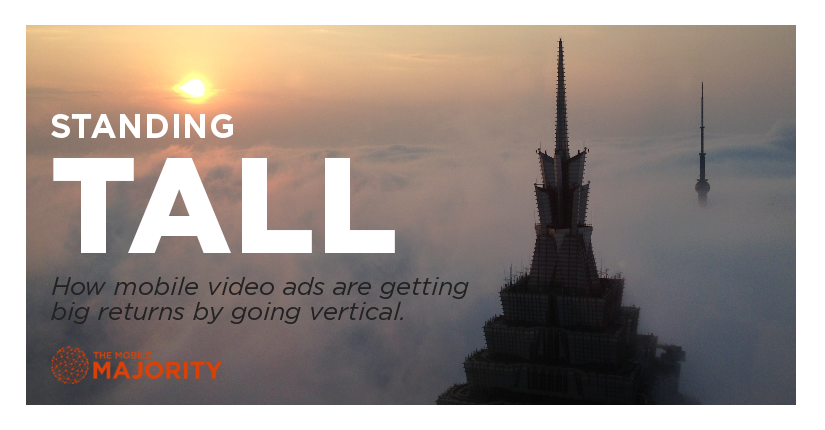I want to talk about mobile video ads for a moment. Specifically, how they’re changing.
But first, here’s what we likely already know about mobile video (if you don’t know, consider this a convenient primer):
- Consumer consumption of mobile video is growing as mobile fast becomes the consumer’s first device. The proliferation of 4G networks has made consuming content outside the restrictions of a WIFI environment possible. It’s now easier than ever to watch content on-the-go.
- Mobile video advertising is set to grow almost five-times faster than desktop. A natural byproduct of the point above. With a greater percentage of consumers moving to mobile, mobile video will surge where desktop begins to stagnate.
- Digital video – particularly mobile – offers advertisers a much more targeted advertising option compared to the longstanding king of video: TV. A big reason for this is programmatic technology. Advertisers don’t have to target an entire audience if they don’t want to. Instead, they can selectively buy those audiences they’re most looking to target through programmatic means.
- In-app mobile video inventory is increasing in value. Consumers spend a vast majority of their time in-app (88% of all time spent on mobile in 2015), and in-app technology has the potential to make video content more engaging and better synchronized with the user’s experience.
Vertical Makes Sense
For years, the widely-accepted maxim in video content has been the wider the better.
First there was fullscreen.
Then widescreen.
And then for the truly ambitious, ultra widescreen.
It made sense – the wider your screen, the more you got to see. And as much of this content was being consumed either on television sets or desktop computers, wider screens were fairly easy to accommodate in living spaces that primarily operate horizontally.
But mobile has started to flip (or rather, rotate?) the script.
From a purely functional perspective, mobile phones are designed to operate vertically. It’s a far easier and secure way to hold the device, and also necessary for operation with a single hand.
It may sound terribly first-world-problem-ish (it is), but having to rotate the phone horizontally to view a video in fullscreen interrupts the user’s experience, especially if that experience was happening inside an app. As a result, mobile devices have shown to be “kept in portrait mode 98 percent of the time.”
Vertical is Mobile-First
And that’s not even considering mobile-optimized video vs. non-mobile-optimized video.
The possible pitfall with horizontal video is the temptation therein to port existing desktop or TV video to a mobile screen. While this can work in certain instances, too often it can lead to an non-optimized mobile experience.
In a Super Bowl video ad campaign orchestrated by Opera Mediaworks, “purpose-built native mobile videos performed 2X better than non-mobile-optimized videos… and saw a 7X higher engagement rate than in-feed display.”
The reason is simple. When you design your creative for mobile (in this case, mobile video), it works on mobile. And that philosophy should permeate all parts of an advertising campaign, not just the creative.
There’s another reason mobile video is going vertical, and it has a little something to do with everyone’s new favorite social app: Snapchat.
Vertical Gets Views
Snapchat may be known first and foremost for the brevity of its content – videos and photos sent via Snapchat only last for 10 seconds, and then disappear.
But the other noticeable factor?
Snapchat’s videos are vertical. It’s a social media sharing app that was designed with the mobile experience as its unquestioned focus.
The result?
Other sources of content have followed suit, looking to capitalize on Snapchat’s success.
YouTube recently announced that it’s Android app would allow vertical videos to play in full screen. Facebook has created a new line of vertical video ads. As more and more publishers – and therefore advertisers – begin to bet heavily on mobile, mobile video ads will continue to flip vertically.
Consumers are creating and sharing vertical videos. Publishers are supporting vertical content. Advertisers are creating vertical ads. So what results do all three of these factors combine to produce?
80 percent higher video completion rates, for one – according to a recent Audi campaign. Snapchat has seen vertical video ads completed as high as nine times more frequently than horizontal ads.
The most significant result, however, is an advertising experience that feels native to the mobile user.
It’s amazing what advertising can do when it aligns with what consumers expect.
Interested in running a mobile video ad campaign? Reach out to us here or sign up for our newsletter below to keep in touch.

